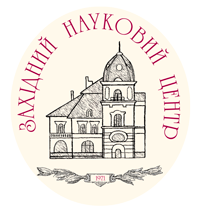Лілія БАЗИЛЯК1, Андрій КИЦЯ1,3, Павло ЛЮТИЙ2,3, Орест КУНТИЙ2, Алла ПРОКОПАЛО1, Олена КАРПЕНКО1
1Відділення фізико-хімії горючих копалин Інституту фізико-органічної хімії та вуглехімії ім. Л.М. Литвиненка Національної академії наук України, вул. Наукова, 3а, 79060 Львів, Україна e-mail: bazylyak.liliya@gmail.com
2Національний університет «Львівська політехніка», вул. Степана Бандери, 12, 79013 Львів, Україна
3Фізико-механічний інститут ім. Г.В. Карпенка Національної академії наук України, вул. Наукова, 5, 79060 Львів, Україна
DOI: https://doi.org/10.37827/ntsh.chem.2022.70.159
СИНТЕЗ ТА АНТИМІКРОБНА АКТИВНІСТЬ КОЛОЇДНИХ РОЗЧИНІВ БІКОМПОНЕНТНИХ НАНОЧАСТИНОК Ag/CuO СТАБІЛІЗОВАНИХ РАМНОЛІПІДОМ
За методом співосадження катіонів Ag+ та Cu2+ в розчині рамноліпіду (RL) отримано бікомпонентні наночастинки срібла й оксиду міді (Ag/CuO-NPs) різного складу. З’ясовано, що процес формування монокомпонентних наночастинок оксиду міді (CuO-NPs) завершується впродовж 2,5 годин, а відновлення йонів срібла у водних розчинах RL відбувається впродовж кількох хвилин. Отримані Ag/CuO-NPs досліджені з використанням методу спектроскопії в УФ-видимому діапазоні та методу порошкової дифракції Х-променів. Виявлено, що спектри поглинання розчинів Ag/CuO-NPs характеризуються двома максимумами за 280 та 410 нм, які відповідають смугам поверхневого плазмонного резонансу наночастинок CuO-NPs і наночастинок срібла (Ag-NPs), відповідно. На підставі отриманих даних обґрунтовано припущення, що отримані Ag/CuO-NPs можуть формувати структури типу «core-shell», ядром у яких є срібло, оточене оболонкою оксиду міді. Досліджена антимікробна активність синтезованих Ag/CuO-NPs щодо бактерій-фітопатогенів Agrobacterium tumefaciens і Xanthomonas campestris і з’ясовано, що отримані препарати активніші стосовно Xanthomonas campestris.
Keywords: бікомпонентні наночастинки, антимікробна активність, рамноліпіди, зелений синтез.
Література:
-
1. Franci G., Falanga A., Galdiero S., Palomba L., Rai M., Morelli G., Galdiero M. Silver nanoparticles as
potential antibacterial agents. Molecules. 2015. Vol. 20. P. 8856–8874. (https://doi.org/10.3390/molecules20058856).
2. Anjum S., Abbasi B., Shinwari Z. Plant-mediated green synthesis of silver nanoparticles for biomedical
applications: challenges and opportunities. Pak. J. Bot. 2016. Vol. 48. P. 1731–1760.
3. Srikar S., Giri D., Pal D., Mishra P., Upadhyay S. Green synthesis of silver nanoparticles: A Review. Green
Sustain. Chem. 2016. Vol. 6. P. 34–56. (https://doi.org/10.4236/gsc.2016.61004).
4. Skladanowski M., Golinska P., Rudnicka K., Dahm H., Rai M. Evaluation of cytotoxicity, immune compatibility and
antibacterial activity of biogenic silver nanoparticles. Med. Microbiol. Immunol. 2016. Vol. 205. P. 603–613.
(https://doi.org/10.1007/s00430-016-0477-7).
5. Zain N., Stapley A., Shama G. Green synthesis of silver and copper nanoparticles using ascorbic acid and
chitosan for antimicrobial applications. Carbohydrate polymers. 2014. Vol. 112. P. 195–202. (https://doi.org/10.1016/j.carbpol.2014.05.081).
6. Krutyakov Yu.А., Kudrinskiy А.А., Olenin A.Yu., Lisichkin G.V. Synthesis and properties of silver
nanoparticles: achievements and prospects. Successes in chemistry. 2008. Vol. 77(3). P. 242–269. (in Russian).
(https://doi.org/10.1070/RC2008v077n03ABEH003751).
7. Lytvyn V.A. Synthesis and properties of silver and gold nanoparticles stabilized with syn-thetic humic
substances: PhD Thesis. Lviv. 2013. 156 p. (in Ukrainian).
8. Tripathi R.M., Saxena A., Gupta N., Kapoor H., Singh R.P. High antibacterial activity of silver nanoballs
against E. Coli MTCC 1302, S. Typhimurium MTCC 1254, B. Subtilis MTCC 1133 and P. Aeruginosa MTCC 229. Dig. J.
Nanomater. Biostruct. 2010. Vol. 5(2). P. 323–330.
9. Szczepanowicz K., Stefanska J., Socha R., Warszynski P. Preparation of silver nanoparticles via chemical
reduction and their antimicrobial activity. Physicochem. Probl. Miner. Process. 2010. Vol. 45. P. 85–98.
10. Panáček A., Smékalová M., Večeřová R., Bogdanová K., Röderová M., Kolář M., Kilianová M., Hradilová Š.,
Froning Jens P., Havrdová M., Prucek R., Zbořil R., Kvítek L. Silver nanoparticles strongly enhance and restore
bactericidal activity of inactive antibiotics against multiresistant Enterobacteriaceae. Colloids and Surfaces B:
Biointerfaces. 2016. Vol. 142. P. 392–399. (https://doi.org/10.1016/j.colsurfb.2016.03.007).
11. Galdiero S., Falanga A., Vitiello M., Cantisani M., Marra V., Galdiero M. Silver nanopar¬ticles as potential
antiviral agents. Molecules. 2011. Vol. 16(10). P. 8894–8918. (https://doi.org/10.3390/molecules16108894).
12. Косінов М.В., Каплуненко В.Г. Гігієнічний текстильний виріб. Патент на корисну модель №26606 UA МПК D06М
11/00. – ДП «Український інститут промислової власності», 2006.
13. Providence B.A., Chinyere A.A., Ayi A.A., Charles O.O., Elijah T.A., Ayomide H.L. Ashishie Green synthesis of
silver monometallic and copper-silver bimetallic nanoparticles using Kigelia africana fruit extract and evaluation
of their antimicrobial. Int. J. Phys. Scie. 2018. Vol. 13(3). P. 24–32. (https://doi.org/10.5897/IJPS2017.4689).
14. Karpenko Е.V., Pokynbroda T.Ya., Makitra R.G., Palchykova Е.Ya. Optimal methods for isolating the biogenic
surfactant rhamnolipids. J. General Chem. 2009. Vol. 12. P. 2011. (in Russian). (https://doi.org/10.1134/S1070363209120135).
15. Akselrud L., Grin Y. WinCSD: software package for crystallographic calculations (Version 4). J. Appl. Cryst.
2014. Vol. 47(2). P. 803–805. (https://doi.org/10.1107/S1600576714001058).
16. Sotirova A., Avramova T., Stoitsova S., Lazarkevich I., Lubenets V., Karpenko E., Galabova D. The importance
of rhamnolipid-biosurfactant induced changes in bacterial membrane lipids of Bacillus subtilis for the
antimicrobial activity of thiosulfonates. Curr. Microbiol. 2012. Vol. 65. P. 534–541. (https://doi.org/10.1007/s00284-012-0191-7).
17. Linhardt R.J., Bakhit R., Daniels L., Mayerl F., Pickenhagen W. Microbially produced rhamnolipid as a source
of rhamnose. Biotechnol. Bioeng. 1989. Vol. 33(3). P. 365–368. (https://doi.org/10.1002/bit.260330316).
18. Bazylyak L., Kytsya А., Lyutyi P., Dozhdzhanyk V., Prokopalo A., Shcheglova N., Karpenko O., Kuntyi О.
Synthesis and antimicrobial activity of CuO nanoparticles stabilized by rhamnolipid biocomplex of microbial
origin. Visnyk Lviv Univ Ser Chem. 2021. Vol. 62. P. 311–321. (https:/doi.org/10.30970/vch.6201.311).
19. Shahmiri M., Ibrahim N. A., Shayesteh F., Asim N., Motallebi N. Preparation of PVP-coated copper oxide
nanosheets as antibacterial and antifungal agents. J. Mater. Res. 2013. Vol. 28(22). P. 3109–3118. (https://doi.org/10.1557/jmr.2013.316).
20. Bazylyak L., Kytsya А., Kuntyi О., Koretska N., Pokynbroda Т., Prokopalo А., Karpenko O. Synthesis and
antimicrobial activity of silver nanoparticles stabilized by ramnolipid. Visnyk Lviv Univ Ser Chem. 2022. Vol. 63.
P. 363–372. (https://doi.org/10.30970/vch.6301.363).
21. Méndez-Medrano M.G., Kowalska E., Endo-Kimura M., Wang K., Ohtani B., Bahena Uribe D., Rodríguez-López J.L.,
Remita H. Inhibition of fungal growth using modified TiO2 with core@shell structure of Ag@CuO clusters. ACS Appl.
Bio Mater. 2019. Vol. 2(12). P. 5626–5633. (https://doi.org/10.1021/acsabm.9b00707).
22. Jadhav M.S., Kulkarni S., Raikar P., Barretto D.A., Vootla S.K., Raikar U.S. Green bio-synthesis of CuO &
Ag–CuO nanoparticles from Malus domestica leaf extract and evaluation of antibacterial, antioxidant and DNA
cleavage activities. New J. Chem. 2018. Vol. 42(1). P. 204–213. (https://doi.org/10.1039/C7NJ02977B).
23. Dayakar T., Venkateswara Rao K., Park J., Krishna P., Swaroopa P., Ji Y. Biosynthesis of Ag@CuO core-shell
nanostructures for non-enzymatic glucose sensing using screen-printed electrode. J. Mater. Sci.: Mater. Electron.
2019. Vol. 30(10). P. 9725–9734. (https://doi.org/10.1007/s10854-019-01307-y).
24. Sankar R., Manikandan P., Malarvizhi V., Fathima T., Shivashangari K.S., Ravikumar V. Green synthesis of
colloidal copper oxide nanoparticles using Carica papaya and its application in photocatalytic dye degradation.
Spectrochimica Acta. Part A. 2014. Vol. 121. P. 746–750. (https://doi.org/10.1016/j.saa.2013.12.020).
25. Kytsya A.R., Reshetnyak O.V., Bazylyak L.I., Hrynda Y.M. UV/VIS-spectra of silver nanoparticles as
characteristics of their sizes and sizes distribution. Functional polymer blends and nanocomposites: A practical
engineering approach. New York: Apple Academic Press, 2014. P. 231–239. (https://doi.org/10.1201/b16895).
Як цитувати:
БАЗИЛЯК Л., КИЦЯ А., ЛЮТИЙ П., КУНТИЙ О., ПРОКОПАЛО А., КАРПЕНКО О. СИНТЕЗ ТА АНТИМІКРОБНА АКТИВНІСТЬ КОЛОЇДНИХ РОЗЧИНІВ БІКОМПОНЕНТНИХ НАНОЧАСТИНОК Ag/CuO СТАБІЛІЗОВАНИХ РАМНОЛІПІДОМ. Праці НТШ. Хім. Наук. 2022 Т. LXX. С. 159-168.

